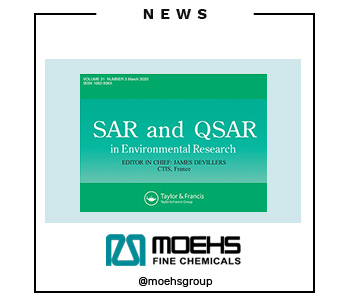A complete article on the procedure that Moehs performs in the evaluation of genotoxic impurities of the APIs it manufactures has been published.
The authors of this article are Antonio Tintó Moliner and Manuel Martín, who carry out their work in the Moehs analytical resources department and with their work and effort they have made these procedures known in a scientific publication.
The magazine SAR and QSAR in Environmental Research belongs to the Taylor & Francis publishing house and is indexed in Chemical Abstracts Service; ISI Current Contents – Life Sciences; Embase; Google Scholar; Lexisnexis Environment Abstracts; MEDLINE; ProQuest and Science Citation Index Expanded.
Below is the abstract of the original publication:
ABSTRACT
A method for combining statistical-based QSAR predictions of two or more binary classification models is presented. It was assumed that all models were independent. This facilitated the combination of positive and negative predictions using a quantitative weight of evidence (qWoE) procedure based on Bayesian statistics and the additivity of the logarithms of the likelihood ratios. Previous studies combined more than one prediction but used arbitrary strengths for positive and negative predictions. In our approach, the combined models were validated by determining the sensitivity and specificity values, which are performance metrics that are a point of departure for obtaining values that measure the weight of evidence of positive and negative predictions. The developed method was experimentally applied in the prediction of Ames mutagenicity. The method achieved a similar accuracy to that of the experimental Ames test for this endpoint when the overall prediction was determined using a combination of the individual predictions of more than one model. Calculating the qWoE value would reduce the requirement for expert knowledge and decrease the subjectivity of the prediction. This method could be applied to other endpoints such as developmental toxicity and skin sensitisation with binary classification models.
SAR and QSAR in Environmental Research is indexed in Chemical Abstracts Service; ISI Current Contents – Life Sciences; Embase; Google Scholar; Lexisnexis Environment Abstracts; MEDLINE; ProQuest and Science Citation Index Expanded.
Reference:
Tintó-Moliner, A., & Martin, M. (2020). Quantitative weight of evidence method for combining predictions of quantitative structure-activity relationship models. SAR and QSAR in Environmental Research, 0(0), 1–19. https://doi.org/10.1080/1062936X.2020.1725116




